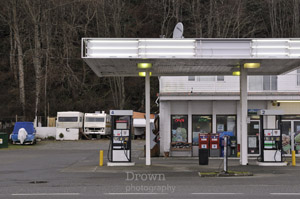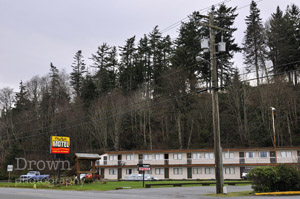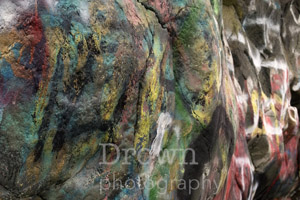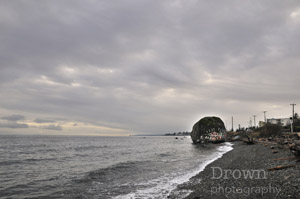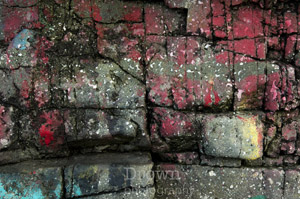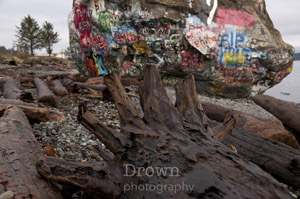Artist statement
In the town of Campbell River, British Columbia, the geology is characterized by remnants from the last ice age: archipelagos, fjords and glacial deposits. One glacial deposit in particular dominates all the others. Known simply as Big Rock, it sits just below the high tide mark and marks the entrance to a coastal community of the same name. There are several first nations legends involving the rock, Captain George Vancouver allegedly noted it in his log book, and some form of paint or graffiti has covered its surface for generations. Yet Big Rock has existed in this place long before any civilizations. This project explores the intersection of time scales and the uniqueness of Big Rock. It is both a natural as well as a societal landmark, a confluence of the effects of human experience and geologic time.
About the artist
Andrew was born and raised on Vancouver Island, in British Columbia. On his way to school, or to visit his father at work, he would drive past Big Rock and wonder about its size, its origins, and notice its graffiti. He remembers driving through the community of Big Rock, past the boat ramps, motels and gas stations. This was also where his parents gave him an old SLR and he discovered photography. He completed a degree in marine biology at the University of Victoria and while studying, took a course entitled “Elements of photographic composition”, which gave some initial structure to his creative process. Over the past 15 years Andrew has pursued photography, while working and travelling in Australia, Thailand, and Europe before moving to Toronto. For the past 9 years, each time he returned home to the coast, Andrew photographed Big Rock. He currently teaches French immersion math and science at King Edward Public School.

